Type of resources
Topics
INSPIRE themes
Provided by
Years
Formats
Update frequencies
status
-

The EU’s biodiversity strategy for 2030 promotes the recovery of the biodiversity of European natural ecosystems through extending conservation networks, preventing and reducing anthropic impacts, and restoring the degraded natural heritage. Marine Deep Reefs (DR) are ecologically relevant benthic habitats acting as CO2 sinks and attracting a highly diverse associated fauna. The multiple pressures DR are currently facing (e.g., climate change, fishery and littering) make the need to protect and restore these habitats more urgent. Marine Litter (ML) can affect the health status of DR, leading to the loss of associated ecological functions. Through an innovative, sustainable approach, the LIFE DREAM Project aims at mitigating the anthropic pressure on deep sensitive habitats (DR) and promoting their protection, recovery and preservation. LIFE DREAM will comprise active intervention to aid the regeneration of DR and will provide supporting information to extend the Natura 2000 network to the deep-sea by integrating biological data on DR and ecosystems services they supply with spatial data on human activities. Active restoration (deployment of artificial structure as substrate for DR the forming-species growth) will be integrated with passive restoration activities (ML removal in correspondence of DR). The involvement of fishers and stakeholders within LIFE DREAM activities intends to enhance the impact of the project and boost a social behavior change. Following the principles of the circular economy, among the ambitions of the Project is pairing the recovery with recycling of materials at the end of their lifecycle, converting the recovered ML in 2nd generation fuel that will reduce the CO2 emissions. The results of LIFE DREAM would represent the baseline to extend the Natura 2000 network to the deep Mediterranean Sea and to restore deep sensitive habitats by providing best practices for DR restoration and the related costs and benefits.
-
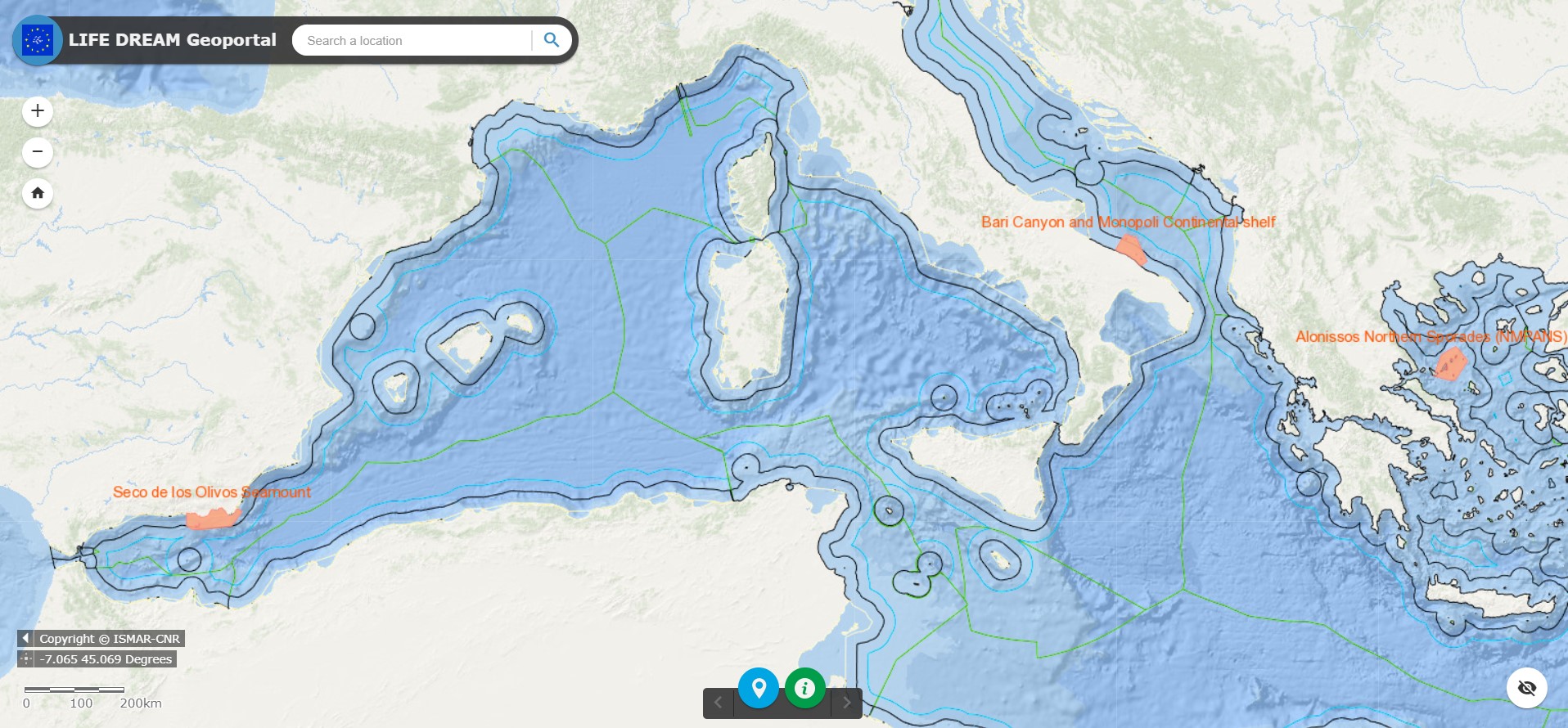
Geoportal implemented in the framework of the LIFE DREAM Project to manage multidisciplinary spatial data at Project Area scale
-
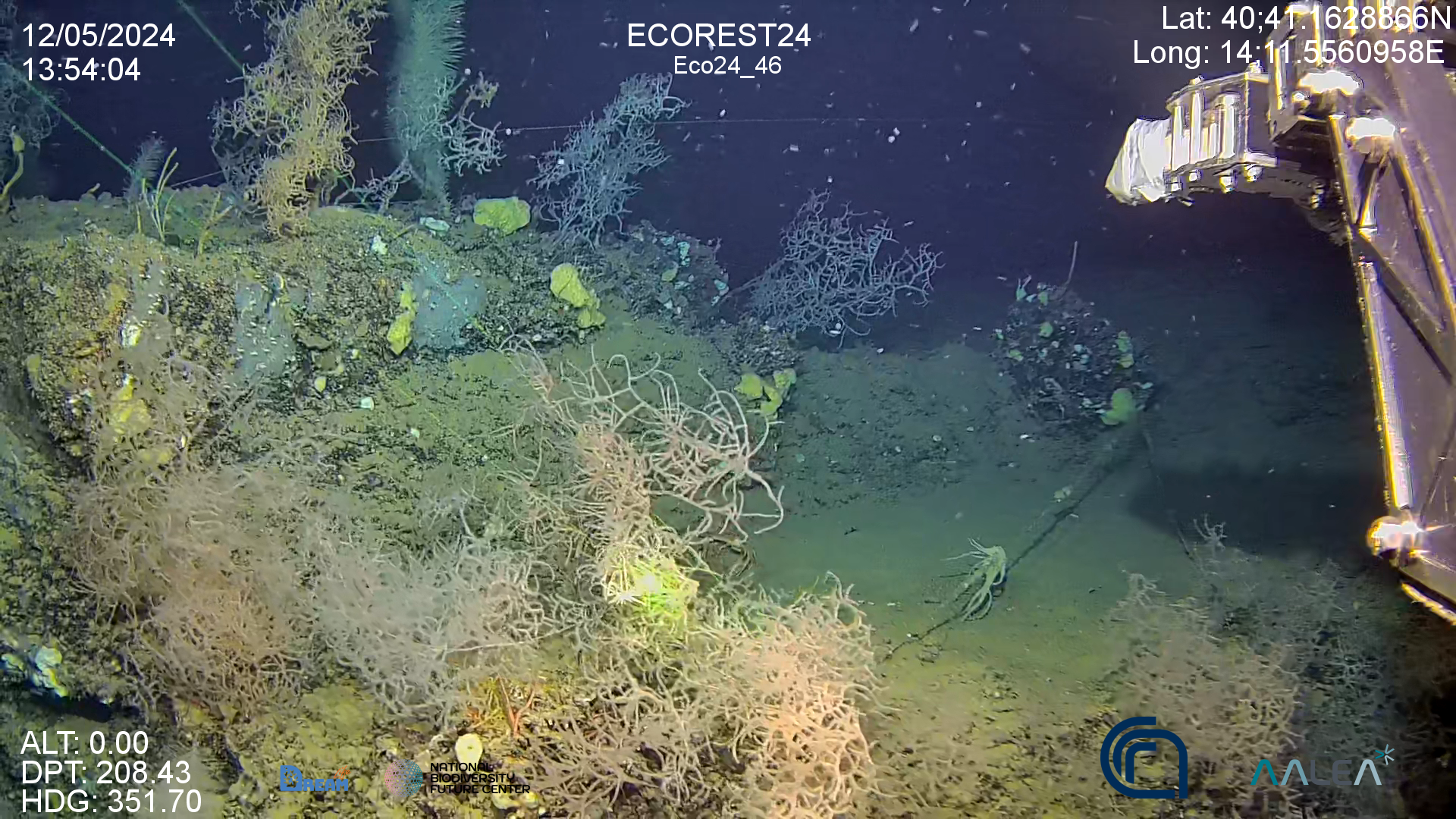
High resolution video on back corals forest in the Gulf of Naples (Italy)
-
Oceanographic campaign on board the CNR R/V Gaia Blu from the 12th to the 22th of May 2024 in the Gulf of Naples The cruise joint the objectives of three projects, all of them intended at exploring, monitoring and restoring deep-sea habitats, the LIFE DREAM (https://www.life-dream.eu/), Spoke 1 and Spoke 2 of the PNRR NBFC (https://www.nbfc.it/en) and the HE REDRESS (https://redress-project.eu/) projects. The habitat targeted by the cruise are the cold-water corals, the deep-water oysters reefs, and the deep black coral forest, with the aim to: - restore the vulnerable marine habitats by removing the marine litter; - restore the vulnerable marine habitats by installing artificial reefs on the seafloor that provide hard substrate suitable for recruiting juvenile individuals; - monitor the vulnerable deep-sea habitats and the impacts of restoration actions by means of permanent deep observation systems; - increase knowledge and awareness on these deep-sea habitats, their ecosystem services and the importance of restoring, conserving and protecting them.
-

Oceanographic campaign on board the CNR R/V Gaia Blu from the 28th March to the 11th of April (LEG1) and then from the 8th May to the 14th May 2024 (LEG2), in the following monitoring sites: Santa Maria di Leuca, Monopoli continental shelf, Bari Canyon, Dauno Seamount, and Dohrn Canyon. The cruise joint the objectives of three projects, all of them intended at exploring, monitoring and restoring deep-sea habitats, the LIFE DREAM (https://www.life-dream.eu/), Spoke 1 and Spoke 2 of the PNRR NBFC (https://www.nbfc.it/en) and the HE REDRESS (https://redress-project.eu/) projects. The habitat targeted by the cruise are the cold-water corals, the deep-water oysters reefs, and the deep black coral forest, with the aim to: - restore the vulnerable marine habitats by removing the marine litter; - restore the vulnerable marine habitats by installing artificial reefs on the seafloor that provide hard substrate suitable for recruiting juvenile individuals; - monitor the vulnerable deep-sea habitats and the impacts of restoration actions by means of permanent deep observation systems; - increase knowledge and awareness on these deep-sea habitats, their ecosystem services and the importance of restoring, conserving and protecting them.
-
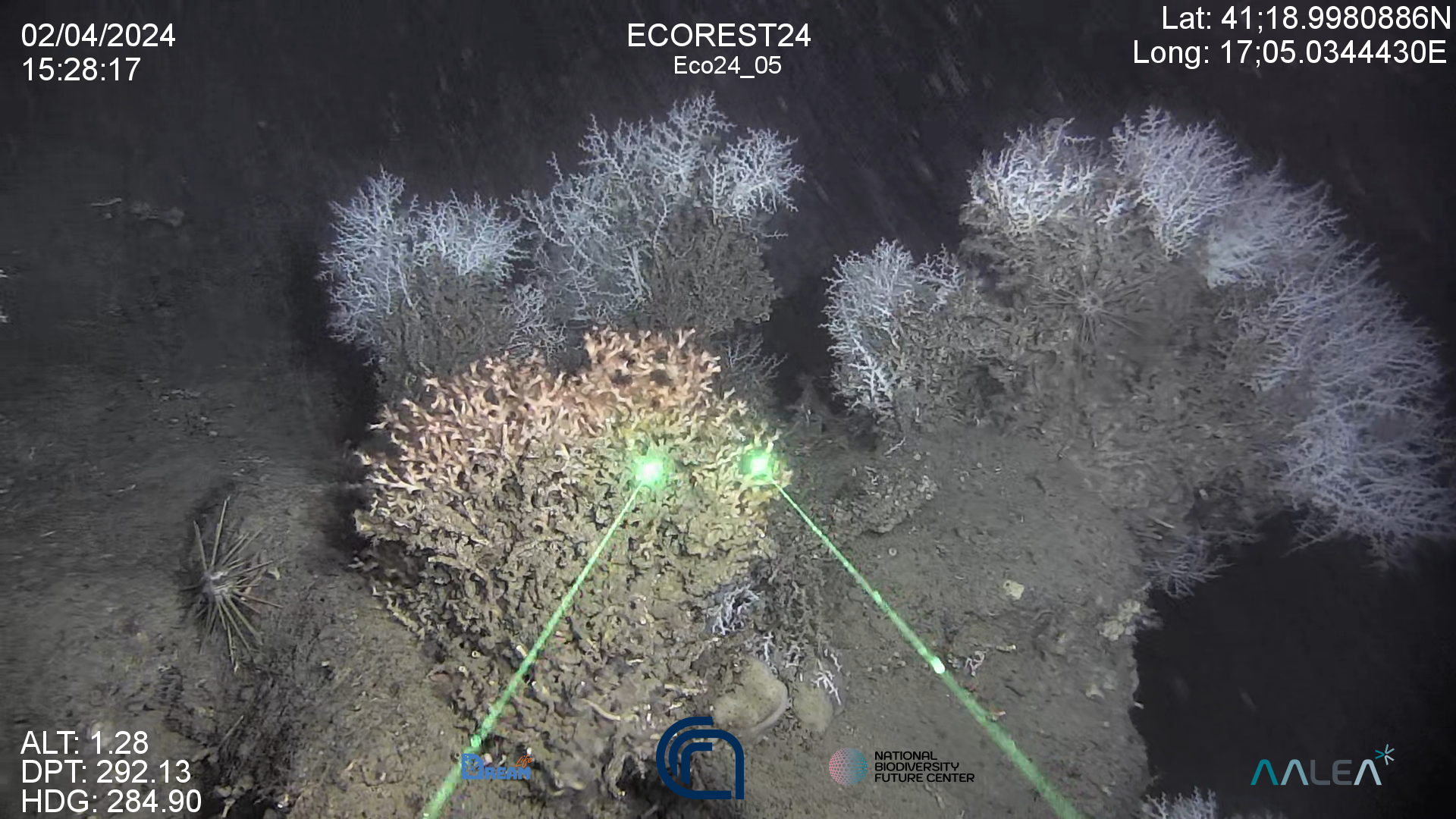
High resolution video on cold-water corals in the Bari Canyon (Italy)
-

High resolution video on cold-water corals in the Bari Canyon (Italy)
-
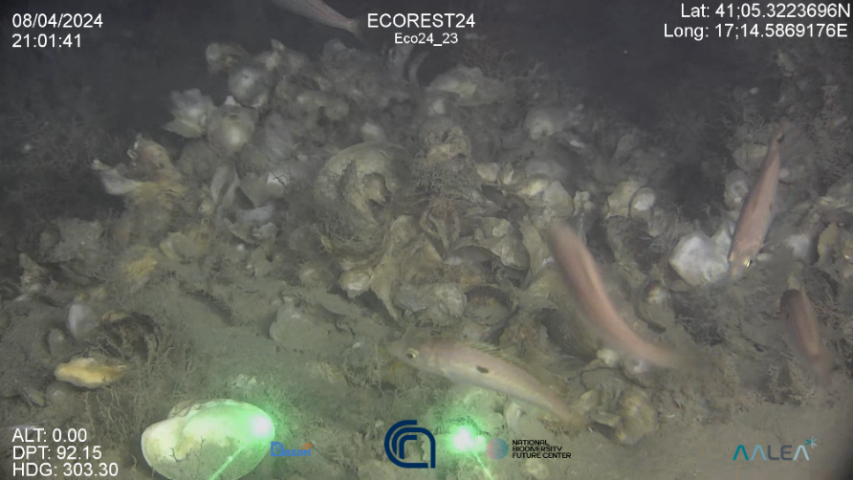
High resolution video on deep oyster reefs offshore Monopoli (Apulia Region, Italy)
-
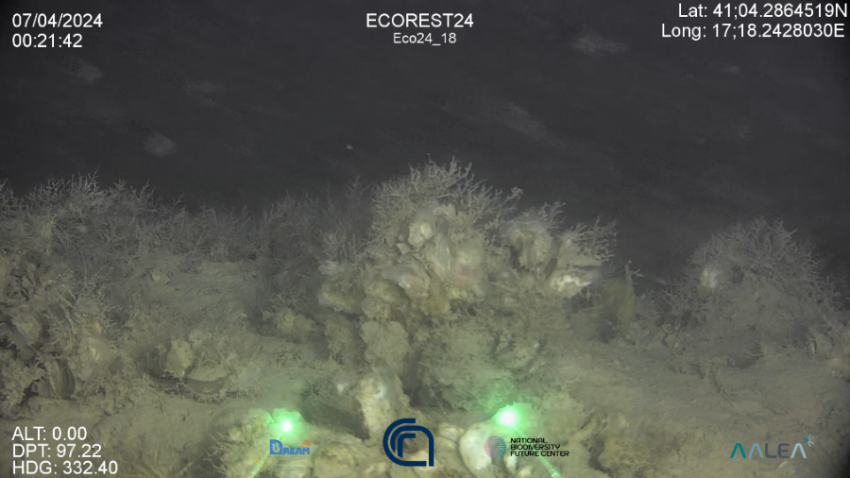
High resolution video on deep oyster reefs offshore Monopoli (Apulia Region, Italy)
 CNR-ISMAR
CNR-ISMAR